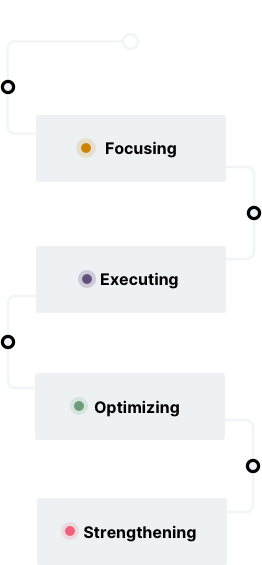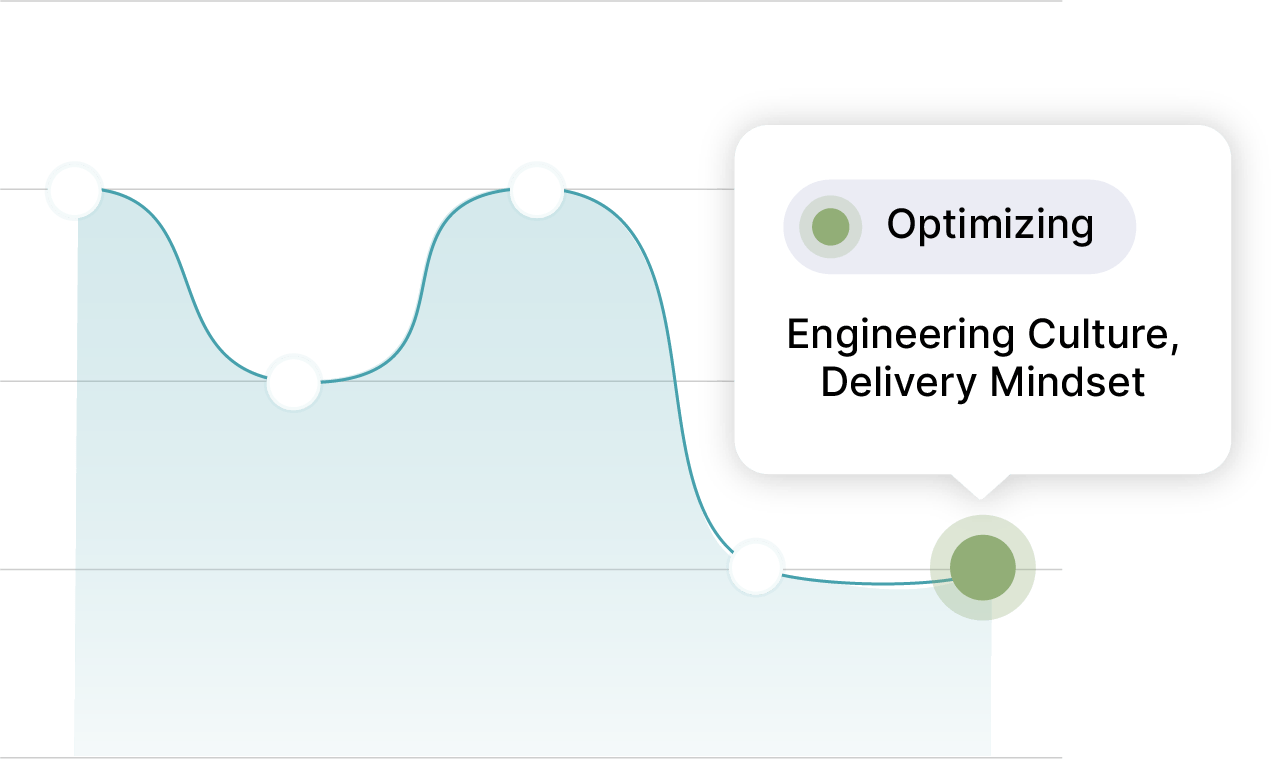Identify the capability investments needed to adapt and take action
With recent events amplifying the rate of transformation, the digital divide between organizations has never been clearer.
Those better prepared to adapt to the new normal are responding to disruption by pivoting to new business models, and new ways of working. Those without the digital capabilities needed to navigate the crisis, are fighting to survive.
Now is the time to reflect on what you are doing as a company, to reprioritize, adapt, and to create resilience in response to the next normal.
Discover how the Digital Fluency Model can help you to make your next move.
Building a resilient digital business.
Modern digital businesses survive and succeed in challenging times because they have built the optimal digital capabilities to support their strategies, and can adapt with agility, no matter what the source of disruption.
Align everything to maximising value delivery by leveraging advanced technology strategies, evolutionary organizational ecology and adaptive leadership styles.
Ensure your architecture is better prepared to move when your business strategy says you need to. Achieved by exposing core business capabilities easily as consumable services, providing self-service access to data, evolutionary architecture patterns and advanced delivery infrastructure.
A design-led and data-driven approach to building modern digital products and experiences iteratively through experimentation.
An organizational appreciation and infrastructure for leveraging all data assets. This includes simple, secure, and efficient capture, storage, processing, and self-service exposure of the organization’s data.
The best business strategies in the world are meaningless without the ability to execute them. Technology driven organizations understand how to make that happen utilizing modern software development practices.
Chart your path to success
Digital Fluency is about achieving what is required for your specific needs and goals and recognizing the importance of continually investing and evolving with your business and customers.
Fluency will be different for each capability, for each organization and even across different parts of the same organization. The path to fluency starts with an awareness that something needs to change in order to be successful.


Adapted from the Agile Fluency® Project agilefluency.org

Focusing
Agree, plan and set up your change
Transparency and collaboration lead to better, more cross functional, decision making. Resources are more focused in on the work that delivers higher value.
Timeframe: 3-6 months

Executing
Mastery of practices
Measurable improvement including: product/service cycle times, increased capability to deploy more digital services (e.g. IOT) , the ability to make change and capturing of more frequent data points lead to a more adaptive business model.
Timeframe: 6-18 months

Optimizing
Remove constraints
Speed of value delivery and ease of technology adoption lead to higher returns and the emergence of new business value streams
Timeframe: 1-3 years

Strengthening
Reinforce across the business
Innovation and product excellence lead to market shaping, unique revenue models. Responsiveness across all aspects of the organization as a core capability, creating intimate customer interactions.
Timeframe: Ongoing
Identify the right level of digital investment for your organization
In any transformation, context is key. To truly succeed, you must first understand your own unique needs and aspirations, and invest accordingly. We’ve designed the Digital Fluency Model to help you to identify the degree of capability your organization needs to execute your goals and the investments required to achieve those capabilities, reducing the risk of over or under-investment.


An initiative built for community
We’ve always been vehement supporters of open source and free knowledge, believing that the greatest ideas are driven by communication and collaboration. Making our latest thinking freely available to all allows us to pay it forward, explore new ways of working, and learn from the feedback of the wider community.

Perspectives: Becoming a modern digital business in 2020
A lot has changed in the last decade and as it draws to a close, many business leaders will no doubt be hoping to pause and catch their breath. But the fact is, in the 2020s the pace of technology-driven change is only set to accelerate. 2020 should begin then, with the resolution to develop a modern digital business.

Digital Fluency: Becoming a modern digital business
The pressure is on to transform your organization into one that is capable of responding to the increasing pace of change in today’s world. Gary O’Brien, Digital Fluency Principal at Thoughtworks, talks about the challenges of digital transformation, and what it takes to become a modern digital business.

Digital Transformation Game Plan
Bring new value to customers by mobilizing tech at the core, powered by a culture of rapid responsiveness. Digital Transformation Game Plan was written by business leaders for business leaders who believe in transforming enterprises through technology.

Digital Fluency: Connecting the Dots of Digital Transformation
‘Digital Transformation’ has become a loaded and overused phrase, meaning many different things to different people. Yet, the pressure to become digital and do it fast remains a very real priority for organizations who want to connect with customers and deliver value. So, how do you prioritize everything that needs to be done to be digital?















